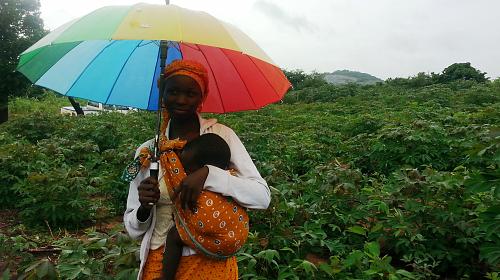
Earlier this week, the US showed that it’s ready to help lead in the fight against climate change, making its first contribution of $500 million to the Green Climate Fund. And it couldn’t have happened on a better day: International Women’s Day.
Climate change is a threat to us all, but vulnerability to those impacts differs among women and men, girls and boys. Vulnerability depends not just on where someone lives or the sector in which someone works but also on how well someone can access the resources needed – economic, social, or political resources – to adapt to changes in climate. And too often, women do not have equal access to those resources.
Women are often not seen as equal players in the household, despite the socially dictated roles they play as the primary providers of care, food, water, and fuel. When women aren’t seen as equal players, they aren’t included in decision-making or planning. Their views aren’t considered, their priorities aren’t recognized, and their rights are not respected. As farmers, women face significant disadvantages that leave their potential untapped: research from the FAO indicates that if women did have equal access to resources for farming, like land, education, and market or weather information, as many as 150 million fewer people would be hungry.
But women are powerful – and they are acting to address the challenges they face, to be able to better provide for their families and contribute to their entire communities’ efforts to lift themselves out of poverty. Take Anastacia. Her foreword opened the report CARE, Food Tank, and CCAFS launched last year: Cultivating Equality: Delivering Just and Sustainable Food Systems in a Changing Climate. Anastacia is a farmer and a mother in northern Mozambique. She wants success for her family – wellness, dignity, and health. So when she heard that neighboring communities were getting Farmer Field Schools through a program with CARE and a local partner, AENA, she knew her community must have one too.
So she went and asked, no told, them that her community should have one. She committed to getting it running and getting her community of fellow farmers engaged. The Farmer Field School is a chance for farmers like Anastacia to try sustainable agricultural techniques that improve the quality of the soil, enhance yields, and diversify foods available. The techniques Anastacia and her fellow farmers are learning and using also help protect crops and soil from the ravages of drought, improving the ability of the soil to absorb and hold moisture so vital for crops.
Anastacia is proud of what her community is achieving, as they grapple with hunger and changing weather patterns. They are taking the steps they can and are eager to know that others are joining them.
This week, the Obama Administration has taken a key step to join the likes of Anastacia, to show leadership, demonstrating that the fight against climate change is one toward which we all must contribute. The US’ contribution to the Green Climate Fund is the first installment toward meeting the 2014 pledge of $3 billion. Investments in helping people like Anastacia and her community adapt to the impacts of climate change are critical investments in achieving the aims of the Paris Agreement.
